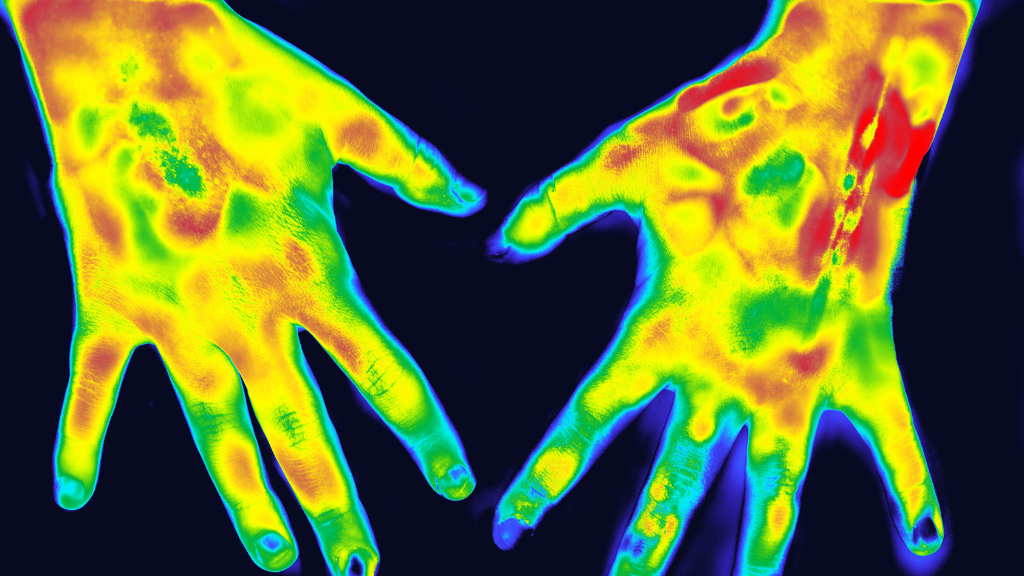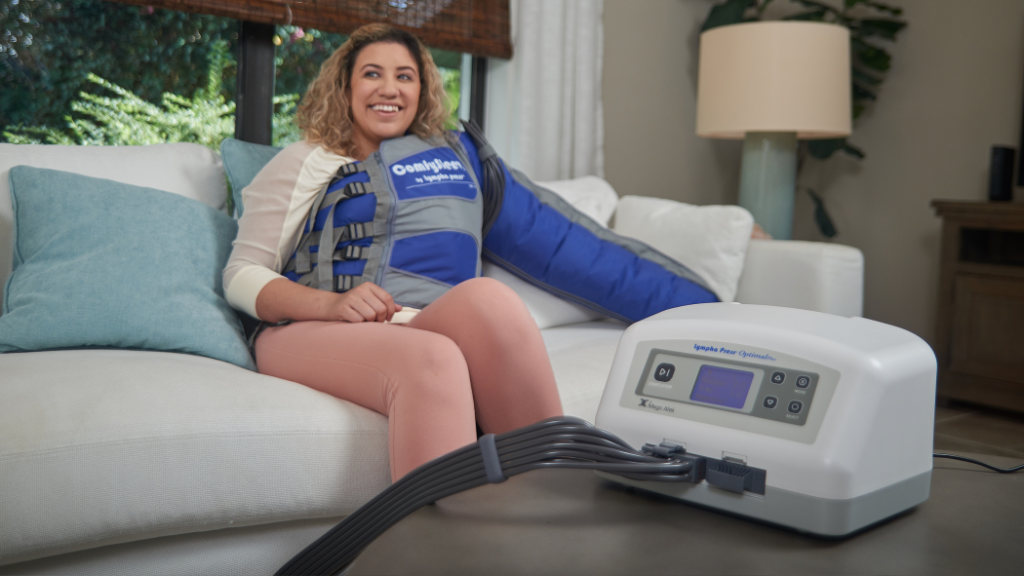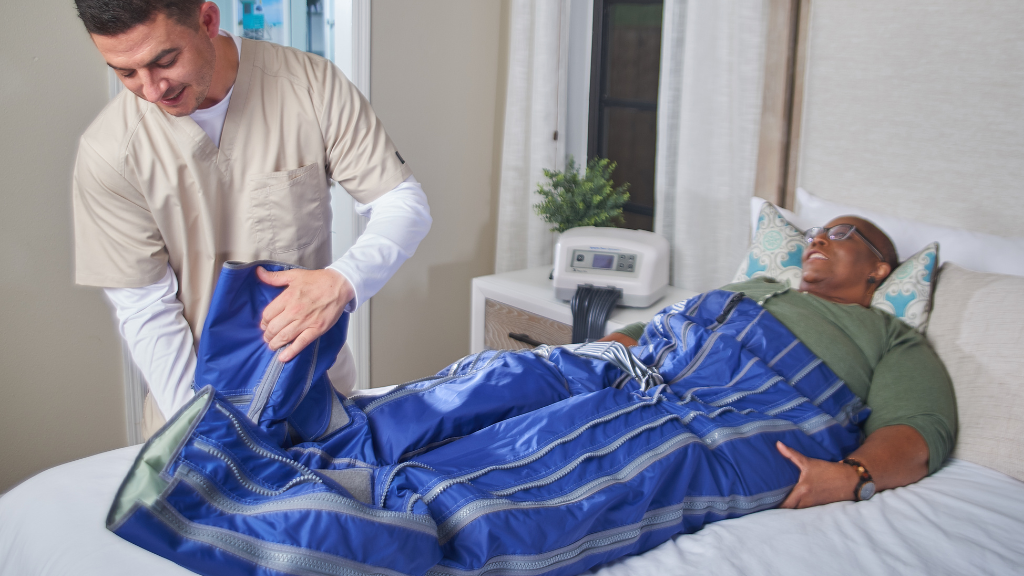This is a 10-minute read.
By Kathleen Lisson, CMT, CLT
Imagine improving lymphedema and lipedema symptoms through breathing and mindfulness. It might sound like wishful thinking, but these are scientifically-proven techniques that are helping people with lymphatic disorders.
Meditation and breathwork are supportive tools for lymphedema and lipedema self care. They help patients ease stress, get the most out of a lymphatic pumping regimen, and manage the symptoms of lymphatic disorders.
The Impact of Slow Breathing on Heart Rate Variability
A study of 60 patients with essential hypertension revealed positive results from a pattern of taking breaths and breaks. Researchers had participants rest for ten minutes, then inhale and exhale for either eight breaths per minute or sixteen breaths per minute for five minutes.
Participants then took a fifteen-minute break, repeated the same sequence as before, and allowed the researchers to study the impact on their bodies. What the researchers found was the effect of slow breathing rate on heart rate variability. Low HRV is a factor in mortality and morbidity and is associated with conditions like depression, anxiety, and chronic stress.
In the study of patients with essential hypertension, researchers found that slow breathing of eight breaths compared with sixteen breaths decreased blood pressure. Thus, slow breathing showed the potential to be a simple and inexpensive method of improving the patient’s autonomic balance. It also had no side effects compared to medication for hypertension.
This is of vital importance because nearly half of all U.S. adults are hypertensive. According to CDC figures, 47% or 116 million adults have hypertension in this country. It’s considered a “silent killer” because so many people have it without necessarily receiving proper treatment.
What if we could use positive breathing techniques like the one described in the study above to save peoples’ lives and improve their health outcomes? This is the fundamental concept behind using mindfulness and breathwork to help people who have lymphedema and lipedema, two lymphatic disorders that are also widespread in the U.S.
Active Meditation and Humming for Good Health
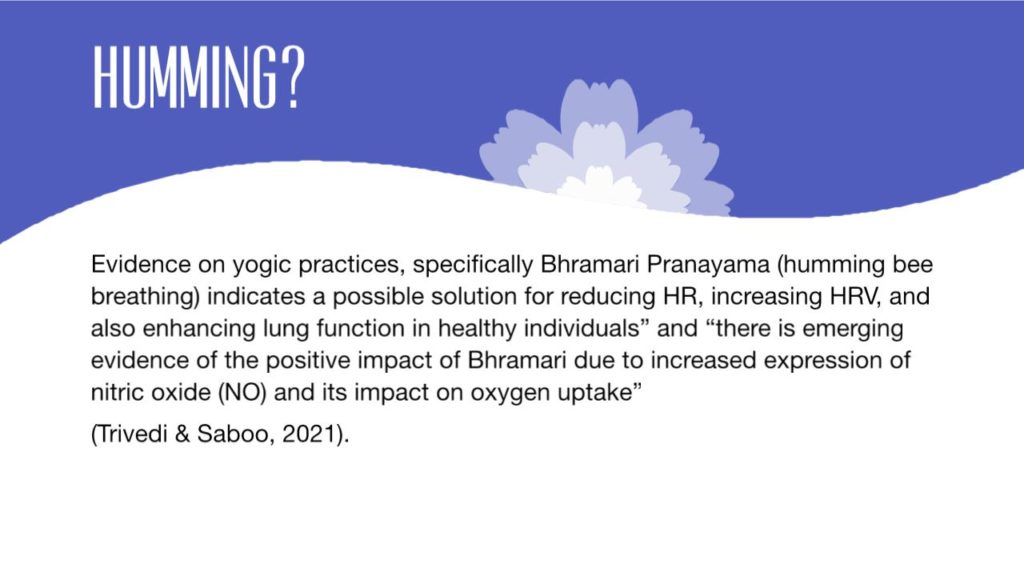
Another research study focused on the impact of an active meditation protocol versus traditional silence meditation. The study looked at heart rate variability in a group of 24 female participants who engaged in mindfulness practices.
The women spent five minutes humming, five minutes inhaling for five seconds and exhaling for five seconds, five minutes focusing on positive emotions, and five minutes focusing on guided imagery for personal goals. This was a total of twenty minutes of mindfulness. A control group spent the same twenty minutes in silent awareness of breath meditation.
The researchers found that the women who engaged in active meditation had a statistically significant increase in heart rate variability. The study’s authors stated that this provides a strong case for active meditation as compared to silence.
How Using the Diaphragm Helps Lymphatic Disorders
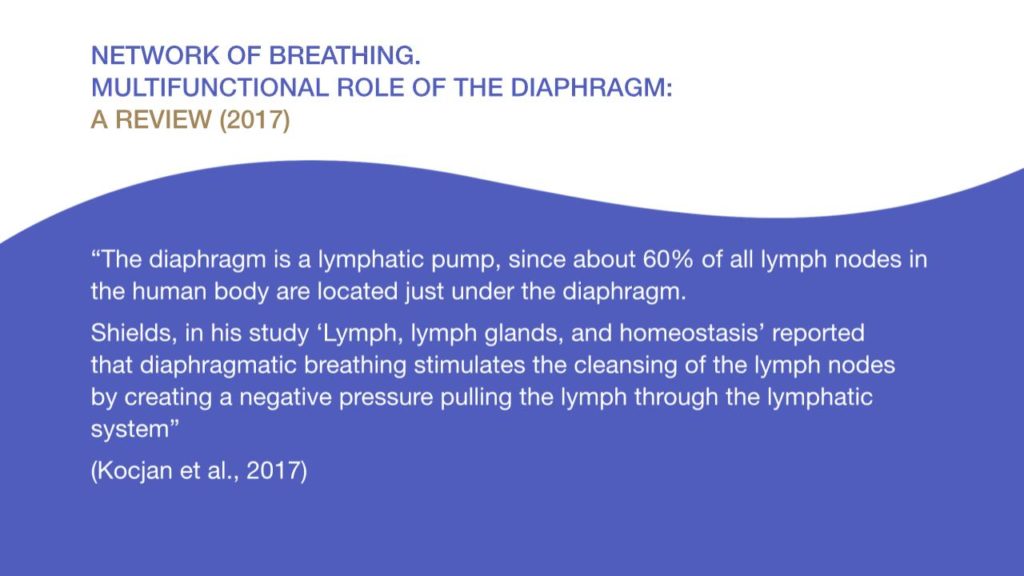
Anyone who has a lymphatic disorder can benefit from the use of breathing techniques that focus on the diaphragm, the dome-shaped muscle located at the base of the lungs.
Researchers have found that the diaphragm impacts lymphatic drainage and the rapid absorption of fluid from the peritoneal cavity (peritoneal tissue lines your abdominal wall and abdominal organs.). By using the diaphragm, you can foster fluid flow within the lymphatic system. About 60% of all lymph nodes in the human body are located under the diaphragm.
To assist the flow of lymph fluid through the lymphatic system, you can use a technique known as diaphragmatic breathing. It involves fully engaging the diaphragm while deep breathing, which creates a negative pressure that stimulates fluid movement and works as a lymphatic pump.
As a certified lymphedema therapist, my hands can only do so much for someone’s body. I can’t get my hands down into a patient’s abdominal cavity. However, your diaphragm is a beautiful muscle that you can use to help clear lymphatic fluid deep within your body. You have a diaphragm, so please use it!
Grounding Techniques For Lymphatic Pumping
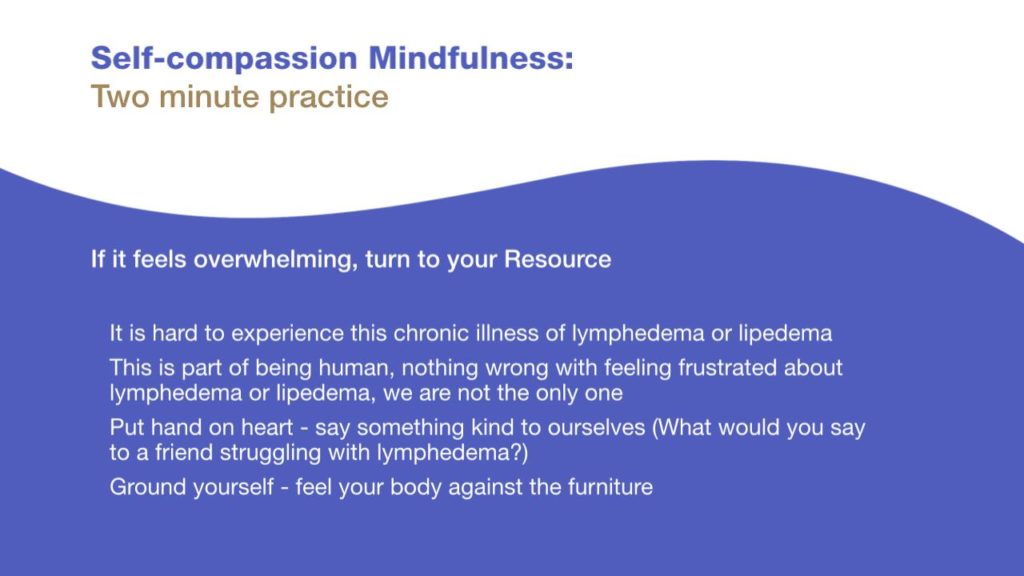
Many people who have lymphatic disorders use lymphatic pumps in their treatment regimens. However, there can be times when someone feels too hyper-aroused or overwhelmed to thoroughly relax and get the best benefit from the pump.
This is when I introduce what is perhaps my favorite technique: grounding. It’s an excellent technique to use when the mind is racing too fast and the breath is moving too shallowly to calm down.
One way of grounding yourself is to open your eyes and search out the colors of the rainbow in your environment. Where is your red? Your yellow? Your orange? This brings you back into your senses and the zone of tolerance for meditation, breathwork, and pumping.
As an alternative, look into the eyes of a pet or loved one to ground yourself. Or think of a happy place like your favorite beach on a nice, warm day. Feel the emotion in your body that remembering your ‘happy place’ brings.
You can even find grounding in listening to the sounds in your environment or feeling your body against the furniture. While pumping, feel the action of the pump doing its work and envision the positive effect on your body.
Three Breathwork Practices
Here are three breathing techniques you can use to support lymphatic health. It’s best to start these techniques in a calm place and in a relaxed yet alert state. If you begin to feel overwhelmed, go back to the grounding methods described above.
1- Diaphragmatic Breathing
- Place one hand just under the ribcage on your abdomen.
- Breathe in slowly through your nose or mouth.
- Push your abdomen out slightly against your hand as you breathe in.
- At the same time, the upper chest should remain as still as possible.
- Bringing your breath from the abdomen, breathe out and feel your belly button move toward the spine.
- As you breathe out through pursed lips, the abdomen moves away from your hand.
- Try six of these breaths in and out.
2- Box Breathing
- Take a two-second inhale.
- Hold for two seconds.
- Take a two-second exhale.
- Hold for two seconds.
- The practice has four segments, like the sides of a square, hence its name.
- Try eight box breaths, following the same pattern of inhaling for two seconds, holding for two seconds, exhaling for two seconds, and holding for two seconds.
3- Toning Breaths
- Wiggle your fingers and toes and stretch for a moment if you need to, especially if you’ve already been trying other breathing techniques.
- This technique comes from ayurvedic medical practices. It’s a type of vibration or humming in the body. We can hum with just the sound Mmmm or use the word, “ram.”
- Take an inhale with your hand above your belly button.
- As you exhale, hum “ram.”
- Experiment with your hands in different positions and feel the vibrations.
- For example, if you have congestion in your sinuses, place your hand on your nose, slowly inhale, then exhale, “ram,” or just hum.
- Personally, I find it beneficial to place my hand on my heart while taking toning breaths in and out, feeling the positive impact of this breathwork practice on my heart.
About Kathleen Lisson
Kathleen Lisson holds a Bachelor of Applied Science degree in massage therapy, is board certified in therapeutic massage and bodywork, and is a certified lymphedema therapist. She’s an ACE-certified health coach and MMI-certified meditation teacher who has spoken at conferences for the American Venous and Lymphatic Society (AVLS), Fat Disorders Resource Society (FDRS), MLD UK, and the National Lymphedema Network (NLN). She’s also the author of “Swollen, Bloated and Puffy” and “The Plastic Surgery Recovery Handbook.” Find more information on mindfulness here: https://solacesandiego.wixsite.com/website
About Lympha Press
Lympha Press addresses lymph disorders by nourishing restorative fluid flow within the body. If you’re a doctor or patient with concerns about lymphedema or lipedema, please take a look at the innovative therapy options from Lympha Press. We offer devices that provide an array of benefits including decreased pain and lymphedema symptom relief.



